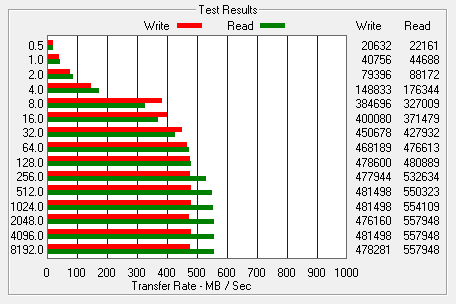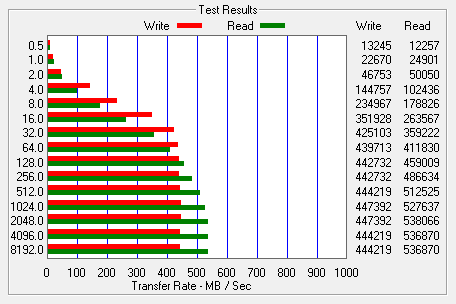The test system used in this review was an HP 8200 Elite. The computer came equipped with an Intel Core i5-2400 CPU, 4GB of DDR3 1333MHz memory, Seagate Barracuda 7200.12 ST3250312AS 250GB SATA 6 Gb/s hard drive, NVIDIA Quadro FX580 512MB PCIe graphics card and an Intel 82579-LM gigabit network card. For the operating system, I installed a fresh copy of Windows 7 Enterprise.
To test the performance of the OCZ Agility 3, I ran a series of benchmarks using CrystalDiskMark 3.0.1, HD Tach RW 3.0.4.0, ATTO Disk Benchmark 2.46, AS SSD, HD Tune Pro 4.61 and Iometer. For comparison, I've also included test results from the OCZ Agility 3 and Plextor PX-128M2S.

As I mentioned earlier, the Vertex 3 is based on SandForce's SF-2281 controller. Like other SandForce controllers, the SF-2281 features a technology called DuraWrite, which uses data compression to lower write amplification and extend the life of the drive by reducing the number of program-erase cycles. This data compression also plays a big part in the controller's performance. The more the data can be compressed, the faster an SSD like the Vertex 3 is able to read and write. Looking at the screenshot above, you can see that there is a considerable performance difference when writing incompressible (0%) and compressible (100%) data. However, thanks to the Vertex 3's synchronous NAND, its read speeds aren't affected nearly as much.
CrystalDiskMark 3.0:
First, I ran a few quick tests using CrystalDiskMark. This benchmark tool measures the performance of a storage device by testing its sequential read and write speeds as well as its random read and write speeds using blocks 512K and 4K in size.
According to OCZ, the 120GB Vertex 3 is capable of reading at 550MB/s and writing at 500MB/s when connected to a SATA 6 Gb/s port. While faster than the Agility 3, the drive's sequential read and write speeds came up a bit short of these numbers when using CrystalDiskMark's default (random) test data.
Like the Agility 3, the Vertex 3 performed much better when using highly compressible 0x00 (0 Fill) data. This time around, the drive was able to read at 495.4 MB/s and write at 460.2 MB/s.
HD Tach RW 3.0.4.0:
Next, I used HD Tach to test the Vertex 3's read, write and burst speeds as well as its seek times and CPU usage.

OCZ Vertex 3 120GB
Looking at the screenshot above, you can see that the Vertex 3 had average read and write speeds of 362.9 MB/s and 347.0 MB/s respectively, as well as a burst speed of 387.0 MB/s.
ATTO Disk Benchmark 2.46:
I also used ATTO Disk Benchmark to test the Vertex 3's sequential read and write speeds. The tests are run using blocks ranging in size from 0.5KB to 8192KB and the total length set to 256MB.
When tested with ATTO, the Vertex 3's read speeds topped out at about 558 MB/s and its write speeds at 481 MB/s.







